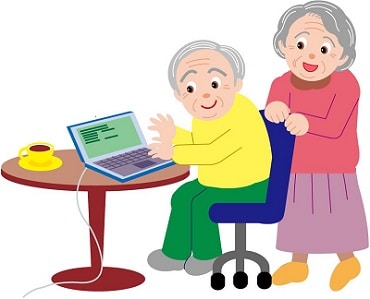We live in a digital world. Gone are the days of door-to-door encyclopedia salesmen, instant pictures that we had to wave in the air to dry, and penny candy. Today, self-propelled robots vacuum the house and cars can drive themselves. Many seniors and some not-so-seniors fondly remember the days when the newspaper was delivered to the front porch and “family” didn’t happen only during the holidays. 
Even though seniors grew up in different times, marketing plans should not make assumptions about their comfort level with technology. The Internet can be used for anything from participating in church services to checking the weather to having groceries delivered at home, and more. Cell phones can be safety tools. The technology in some video games adapts well to seniors, such as bowling and dancing games that encourage movement but do not require physical strength. Thus, many seniors have a degree of comfort with technology.
That said, technology is not without challenges. As early as 1969, in her book “Hallowe’en Party,” Agatha Christie penned the phrase, “To err is human, but a human error is nothing to what a computer can do if it tries.” With that in mind, websites and other technology tools marketed to seniors should be easy to use, reliable and have quick access to a live person for questions or problems.
As mentioned in Stellar Strategies for Marketing to Seniors, seniors appreciate clear, succinct, communication that encourages independence and is directed to them, not their children. To promote a senior living community, consider using phrases like “family-style meals” or “girls’ days out” and images that show happy gatherings. Marketing materials should highlight independent choices and decisions, rather than focusing on the fact that there is a nurse available 24 hours/day. While having a nurse on-site may be important, it shifts attention to declining health rather than independent, active, satisfying lifestyles.
Seniors are as large and diverse a group as any other demographic. Future generations in their new-fangled worlds will consider today’s technology marvels archaic. Care should be taken to not generalize based on age but to look deeper at what is value-added for the senior and formulate the marketing message from that perspective.
Christie, A. (1969). Hallowe’en Party. Page 35, Pocket Books, New York, NY. (First published in 1969; quote in reprint 1970 paperback edition).